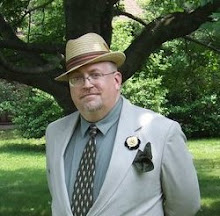"The Tontine Curse," set in Bath in 1779, is straight-up fiction. A tontine has been set up amongst a number of children, and an alarming number of them are meeting with sudden deaths. One pretty young girl keeps escaping with her life; is she merely fortunate, or is some other force at work? Is it a supernatural curse? Or the hand of man? There's not much historical about this other than Johnson's trip to Bath in 1779, but de la Torre wryly notes that tontines were practically invitations to multiple murder.
London of 1780 is the setting of "The Stroke of Thirteen," which is also largely fictitious. Johnson and Boswell are called in when a young soldier is tried at court martial, and sentenced to death, for falling asleep on watch. Not so, he cries, insisting that he heard the great bell of St. Paul's strike thirteen! And so Johnson sets off to find the truth of the matter. The situation isn't real, but there was a real incident when the bell in question did indeed strike thirteen, and one character, Captain John Donellan, turns out to have had quite a career later on.
"The Viotti Stradivarius", set in London in 1783, has a plethora of real-life characters who descended on a famous fiddle-maker's shop...in real life, they were frequent guests, but never all at once. At the shop of Charles Burney come Boswell, Johnson, Giovanni Viotti and his Stradivarius, Prince Orlov, and Burney's daughter Fanny, and in the course of the evening the famous Orlov diamond vanishes. Johnson's detection of the theft, which includes a premature invention of fingerprint analysis, makes for an entertaining tale.
"The Black Stone of Dr. Dee" is a juicy Gothick tale set at Horace Walpole's mansion Strawberry Hill in 1771, and kicks off with a real letter from Walpole in which he describes a puzzling break-in. De la Torre goes from there, creating a zesty mystery plot in which Boswell savors his terrors while spending a night in a supposedly haunted room, beset with all sorts of Gothick terrors. Criminals, or ghosts, seem to be after a crystal ball once owned by John Dee, or are they after something else entirely?
| The real stone in question |
| Wright can be seen at the National Portrait Gallery here in DC... |
"The Missing Shakespeare Manuscript," set in Stratford-on-Avon during Garrick's Shakespeare jubilee of 1769, is all about the theft of a newly-discovered Shakespeare play, "Caractacus." Although the plot and characters are fictitious, it is inspired by William Henry Ireland and his infamous forgery of Shakespeare, Vortigern and Rowena.
The last story, "The Triple Lock'd Room", is a fiction set in 1775, inspired by a Hogarth etching, and containing a bunch of invented characters and one real person, James Bruce, a famous traveler and author. De la Torre got her idea from this famous picture, "The Toilette" which is part of his "Marriage a la Mode" series.
 |
| The boy in the lower right is featured in the story. |




No comments:
Post a Comment